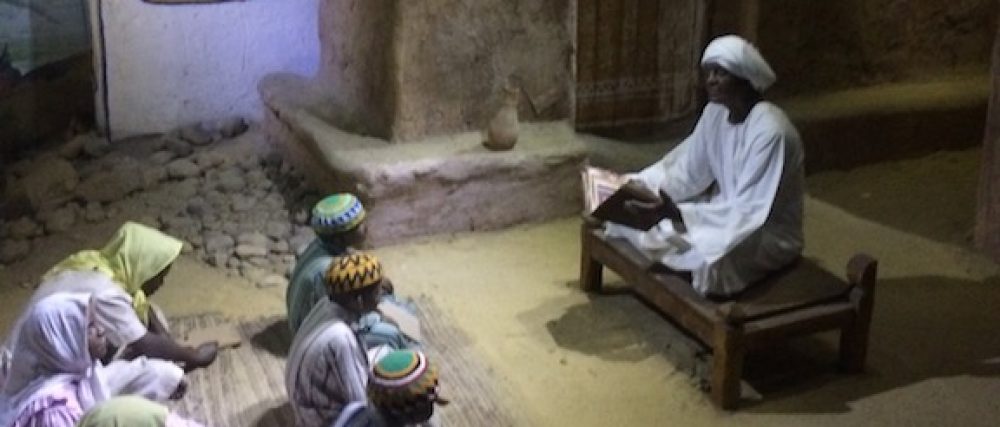Love for the Prophet Muhammad is an indisputable cornerstone of the Islamic faith, but the celebration of the Prophet’s birth has in modern times surfaced as a matter of contention. Despite its long-standing and widespread tradition, modern detractors have insisted that it is a blameworthy invention within the religion because it was not observed during the lifetime of the Prophet or his immediate predecessors. Others see it as an odd parallel to Christmas and a segue to the excesses of the Christians in their love for Jesus. While I will leave the legal debates to the experts, I seek to offer an additional perspective on the Mawlid. Given what we know of Sabian views on prophets and angels, there is more wisdom to celebrating the advent of the prophet than we may think.
Angels vs. Prophets
As mentioned in previous posts, one of the core disagreements between the Sabians and Hanifs according to Muhammad al-Shahrastani was the issue of prophecy and prophethood. The Sabians glorified the angels and deemed them superior to human prophets, because they are sinless and pure. To them, man is tainted both physically and spiritually because he is subject to carnal desires and temptations that distract his worship of God. The Hanifs, on the other hand, exalted the human prophets as God’s chosen guides to mankind. They believed that human beings who have overcome their desires and temptations through the grace of God, such as prophets, have more merit. They contend that angels have no choice but to worship God at all times and there is no merit in compulsion (Shahrastānī and Muhammad, 1993, 16-22).
By no means did these debates end in pre-Islamic times. Rather, they ensued well into Abbasid-era Islamic scholarly discourse and beyond. Ibn Rawandi, a Mu’tazilite scholar turned skeptic, was in conversation with a Sabian group called the Brahmins concerning the role of the intellect in religion. This group argued that the intellect was a sufficient alternative to revelation. They figured that even if the prophets brought teachings that were compatible with the intellect, the prophet would be superfluous because humans were already endowed with intellect. Likewise, they reasoned that sanctuaries in Mecca like the Kaʿba, Black Stone, Ṣafā, and Marwa, etc. were no different from other places in the world. So it made no sense to perform rituals at these sites to the exclusion of others and this was thus opposed to the intellect. Similarly, they deemed the prophets no different from other men even if they could predict future events. This is because they could determine the future by the stars and are thus in no need of prophets (Lawrence, 1976, 80).
The 15th century Egyptian scholar, Jalāl al-Dīn al-Suyūṭī wrote a book on Islamic angelology titled, Al-Ḥabā’ik fī Akhbār al-Malā’ik (The Arrangement Concerning the Traditions of the Angels), in which he collected the opinions of various Muslim scholars concerning the merits of angels versus human prophets. In a section, not featured in its English translation, he enumerates the various opinions of Muslim scholars on the preference of human prophets or angels. In summary, he states that there were three main positions:
1) the prophets are greater than the angels. This is the majority opinion for Sunnis and Shi’as.
2) the angels are greater than the prophets. This is the position of the Muʿtazilites, but there are some Sunni scholars who hold this opinion.
3) that there is no comparison; except that all are agreed that the Prophet Muhammad is the best of creation. (Suyūṭī, 1988, 203)
We find here, that the Muʿtazilites inherited the positions of the Sabian philosophers with regards to the angels and prophets. It is therefore the reemergence of Sabian thought within the Islamic umma that seeks to belittle the prophets to the level of ordinary men, rather than guides and examples who should be followed and celebrated. It is the core Hanif strain within Islam that opposes this diminution of the prophets and exalts their status and benefits for all of mankind.
References
Lawrence, Bruce B. Shahrastani on the Indian Religions. De Gruyter, 1976.
Shahrastānī, Muhammad ibn ʿAbd al-Karīm al-, and Ahmad Fahmi Muhammad. Al-Milal Wa al-Niḥal. 2nd ed., Dār al-Kutub al-ʿIlmīyyah, 1992.
Suyūṭī, Jalāl al-Dīn al-. Al-Ḥabā’ik Fī Akhbār al-Malā’ik. Dār al-Kutub al-ʿIlmīyyah, 1988.


